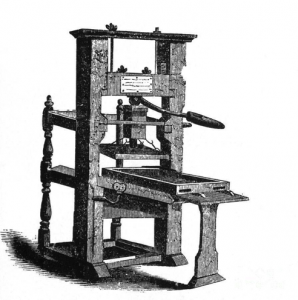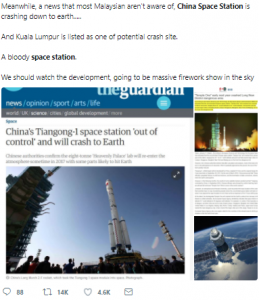Written by Balqis Ariffin
Malaysia is blessed with diverse and unique cultural heritage especially its traditional dance, formed from the influence of various races that live in harmony in the nation. Each state in Malaysia possesses their own particular dance routine which makes them distinct from other states. Perak is no exception with its historical Dabus dance that has existed for over 300 years (Kementerian Kebudayaan, Kesenian dan Pelancongan Malaysia, 2003).
Dabus is a word taken from the Bugis language, meaning metal or sharp spear. However, in Dabus dance, an ‘anak Dabus’ is the essential tool used by the dancers when performing. During the dance routine, the dancer will shake the anak Dabus to produce a crackle noise that has a repetitive rhythm. Additionally, anak Dabus is used by the dancers to poke their arm or stab their bodies to signify a warrior’s braveness in battling the enemy. Therefore, the routine in this traditional dance has its own purposes (Sulong, Saidon, & Hashim, 2013).
On the other hand, in the original Dabus dance routine, the tools used are not confined to anak Dabus alone, but the dancers can opt for several other sharp weapons such as a machete, keris, dagger, rope, and millstone (Kementerian Kebudayaan, Kesenian dan Pelancongan Malaysia, 2003).
Numerous theories have emerged on the origins of Dabus dance. Primarily practiced in Perak and Selangor, some claimed that it came from Indonesia, Baghdad and Buginese people, but it was universally agreed that it originated from the Middle East. Interestingly, such form of entertainment was initially a self-defense art but has been forgotten by the current generation as it is only practiced by the elderly (Sulong, Saidon, & Hashim, 2013).
According to folktale, Dabus dance began in the era of Islamic progression, whereby a disagreement on religion between two parties namely Saidina Ali and his foe had led to warfare, prompting the former to create a dance meant to frighten away his enemy, and to prevent division among his followers. Luckily, wounds on the dancer will recover following a spell casted by the leader. It was believed that this traditional dance was spread to the Malay Archipelago by Islamic traders.
However, Tuan Haji Ismail opposed the former assumption, theorising that the Dabus dance was first practiced in Perak, particularly in Tanjung Bidara, Kampung Gajah and Pulau Tiga by Tok Pawang Bakar, a local from Kampung Gajah, Perak. This man was believed to have traveled to Acheh and had learned the dance there. Subsequently, he brought it back to Perak and taught Tok Banda Cu Biduan, who later passed it on to his son, Alang Dolah (Sulong, Saidon, & Hashim, 2013).
Meanwhile, others claimed that the Dabus dance was brought to Perak in 1600 by two Sumatrans traders from Batu Bahara, known as Nakhoda Lembang and Nakhoda Topah. Both men came to Telaga Nenas, Sitiawan in Perak and were believed to have practiced Dabus at night, attracting the locals, and they continued to practice it in their travels to Pasir Panjang, Bagan Datoh and Kuala Selangor.
The history of Dabus in Perak can be traced as far back into the 1680’s, during the Dutch’s colonialism in Pulau Pangkor, at a time when they held control over the local tin industry and built a plant in Teluk Gedung, Pulau Pangkor. In this history, Panglima Kulop Mentok, a man who is believed to be the descendant of King Bugis from Sulawesi, Indonesia was against the colonialist’s ruling. To escape from the Dutch’s cruelty, he built a settlement at Pulau Sembilan with his followers. Later on, he and his followers were said to have attacked the merchants’ ships and plant at Teluk Gedung, which belonged to the Dutch. Some claimed that Panglima Kulop Mentok along with his followers adopted the Dabus practice to combat the Dutch soldiers. Subsequently, Dutch soldiers fled the scene and left their plant behind (Kementerian Kebudayaan, Kesenian dan Pelancongan Malaysia, 2003).
Also in Perak, the Perak government once lent Pulau Pangkor and Manjung to the British government in 1826 and 1274 respectively. During the time when the British government in Penang experienced a threat from a pirate led by Daeng Mentanu in the Straits of Malacca, about 100 Dabus practitioners in Manjung were gathered to assist the soldiers (Kementerian Kebudayaan, Kesenian dan Pelancongan Malaysia, 2003). As of current, this traditional dance is still being practiced in several places around Perak such as in Lumut, Pasir Panjang Laut, Setiawan and Teluk Intan (Sulong, Saidon, & Hashim, 2013).
The number of Dabus group members consist of less than 22 people; comprising of the dancer, the musical instrument player and also a leader that is referred to as ‘khalifah’. Basically, the role of khalifah is to ensure the safeness of the dancers throughout the performance by conducting preparations beforehand, in which the leader will cast a spell on stage, on the anak Dabus, on the dancer, and on the player as well. Furthermore, at the end of the performance, the khalifah will aid the unconscious dancer and heal the wounds from anak Dabus.
In this traditional dance, there are taboos required to be adhered to by its followers, for instance, it is important that the dancer and the place are sanitary, and the player is forbidden from cursing, apart from speaking obscene words and fight with other players.
Besides that, it is necessary for the anak Dabus to be well cared for, meaning that it should not be stepped on or even poked to the ground. Apart from that, outsiders are not allowed to touch the instruments and tool used in the performance. It is alleged that failure to abide by these rules will eventually result in a catastrophic condition (Kementerian Kebudayaan, Kesenian dan Pelancongan Malaysia, 2003).
The ‘anak Dabus cabang empat’ is among the anak Dabus used in the dance, and the four divisions refer to the elements of water, fire, wind, and earth, signifying honesty, confidence, strength, and spirit. Similarly, a symbol of bravery can be seen as the dancer pokes the anak Dabus to their hands without hesitation, and such bravery can be due to the trance. However, its practice is no longer practical due to the influence of Islam which forbids the belief in such elements (Sulong, Saidon, & Hashim, 2013).
In terms of the outfit worn by the Dabus players, the Khalifah or leader holds responsibility in selecting the colour and clothes that is to be worn. Still, adults will usually wear black traditional Malay attire which signifies boldness, while children tend to wear a chartreuse colour.
Besides that, there are three types of Dabus dance in Perak known as Susun Sireh, Ayun Tajak, and Lang Sewah, but these routines tend to start with Susun Sireh. To recognize this dance is easy, as the dancer steps forward three times before sitting down in order to show respect towards the audience before the performance begins.
Dabus dancers are usually paired up regardless of gender, and each will hold a pair of anak Dabus while dancing to the rhythm and song. After the dancer has finished his turn, he will be replaced by another dancer until the performance ends. Generally, the song plays for about ten minutes (Kementerian Kebudayaan, Kesenian dan Pelancongan Malaysia, 2003) and can be in the Arabic language or Bahasa Malaysia, singing praises for Allah, Islam and the prophets:
Adam Siti Hawé datuk nenek moyang kité mati di Jedah di luar koté. Batu nisannya
berjanjar tigé. Banyak hari perkaré hari, hari Jumaat yang sebenar hari. Banyak nabi perkara
nabi, Nabi Muhammad sebenar nabi. Budak-budak pergi ke sekolah, lagi mendapat lagi
terpuji. Cukup duit pergi ke Mekah, boleh berziarah ke makam Nabi
(Sulong, Saidon, & Hashim, 2013).
Both of the languages can also be sung alternately during the performance, evident from the excerpt below;
He Allah he Allah, Hodal hema kheya maulai, He Allah he Allah,
Lana mahbud se wa Allah. Mura di seng Allah mura diseng, Kama la izin Allah mura di,
Mura di yah Allah mura di yah, Kama la izin Allah mura di. (In Bahasa Malaysia) Tuan
Haji berbaju jubah, Pergi ke padang berburu rusa,Orang mengaji memuji Allah, Orang
sembahyang mengampun dosa. Syed Hassan Syed Hussein, Anak cucu Rasulullah, Mati Hassan tinggal Hussein, Mati berperang Sabilullah
(Sulong, Saidon, & Hashim, 2013).
Other than that, a poem can be included as the verse of the song, which can be referred to below;
Baju putih serban putih,
Lalu dibawé pergi sembahyang,
Allah kasih Muhammad kasih,
Rasulullah terlalu sayang.
Tuan Haji berbaju jubah,
Pergi ke padang berburu rusé,
Orang mengaji memuji Allah,
Orang sembahyang mengampun dosé.
Tetak tebu kilaskan dayung,
Hendak mendayung selat Melaké,
Tuntut ilmu buatkan payung,
Buat mendinding api neraké.
(Sulong, Saidon, & Hashim, 2013)
Furthermore, the verse of the Dabus’ song consist of two components namely Hadi which refers to the chorus and also Jawab. Basically, the chorus or Hadi is taken from the litany verses of the Arabic language, while Jawab is solely based on the creation of the singer, and is sung in Bahasa Malaysia to praise or give advice to the audience (Sulong, Saidon, & Hashim, 2013).
Both of the Hadi and Jawab sang alternately. The first chorus or Hadi is known as Bishahrin, whilst the second chorus is referred as Tanaqal and the third is identified as Alham. In the meantime, the first Jawab after the hadi is referred as Muradiseng whereas the second Jawab is known as Allahummasalli. This can be seen below;
Hadi: Bishahrin rabieQad bawa nuruhul a’laFaya hab baz badruBiza kal hema yujla.
Jawab: Mura disin, Allah mura disinKamala izin Allah muradinMura diya Allah mura diyaKamala izin Allah muradin.
Hadi: Tanaqal fi adhlabi arbabi sudadinKazal’ shamsufi abrajiha tatanaqqal.
Jawab: Sa..le la mahkota alam Bukit zaman kubur aulia. Mari dituntut besi yang tajam buat penawar besi yang bias.
Hadi: Alhamdulillah hillazi a’toniHazal ghula mal taiibal. Azdani.
(Sulong, Saidon, & Hashim, 2013)
Basically, the lyrics in Dabus dance are difficult to understand as it is indirect and has subtle meaning, this could be due to the fact that most of the traditional dance’s lyrics tend to relate with magical connotations.
Apart from that, the instruments that accompanies the dance are gong, Dabus tambourines, and anak Dabus in which the gong signifies the tempo, and the dance routine depends on the beat of the gong. Meanwhile, about five Dabus tambourines were used in a dance and only the anak Dabus is played by the dancer to create a crackle noise as the metal is shaken.
The dance routine is commonly performed as entertainment after Isyak prayers as during that time, there are less limitations to the instruments. Furthermore, the primary role of the Dabus dance is to strengthen the relationship between the local people or villagers.
As of current, it is only performed for official events, engagement day, family day and marriage ceremonies. Therefore, such traditional dance is limited to special occasions and is no longer a common tradition of the locals, compared to the past. It is alarming to see its decline among the local people, and it no longer carries the aim of strengthening relationship between people (Sulong, Saidon, & Hashim, 2013).
Western dances have become so prevalent in Malaysia nowadays that traditional dances are disappearing although local dances such as Lion dance, Joget, and Zapin are still performed in public. Other cultural dances namely Ulek Mayang, Kuda Kepang, Mak Yong, Farapeira and so on remain unnoticed by the people as it was rarely seen (Amy, 2016).
Therefore, it can also be claimed that Dabus dance is included amongst the traditional dance that was seldom performed to the public as it was hardly shown to the masses compared to other dances and subsequently, it signifies that Dabus dance has lost its prominence among the public. In addition, it is a sign that such traditional dance will be fading away with the current advent of technology as other forms of entertainment has monopolized the youth nowadays.
Moreover, Alena Murang, a native of the Kelabit ethnic who plays ‘sape’, a musical instrument, tries to promote her culture from disappearing by advocating the idea that culture is non-replaceable. To her, culture needs to be valued by everyone as it draws people closer together as a community, in respect to the ancestors and also a form of cultural identity for the society.
Furthermore, she proposed for the traditional arts to be preserved, perhaps by merging or fusion, to attract the youth’s interest (Seng, 2016). As stated by the Malaysia-China chamber of commerce vice president, Datuk Frankie Liew, tradition and culture are on the edge of extinction due to rapid development. Thus, measures need to be taken to ensure that the local heritage does not fade away (Lee, 2015).
Therefore, local people, the government, and respective parties carry the responsibility of ensuring that the cultural heritage of Dabus dance will not fade, nor forgotten, as it is a loss to ourselves if we lose our cultural identity.








